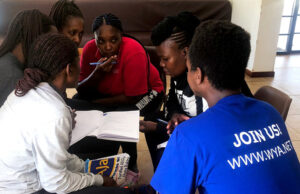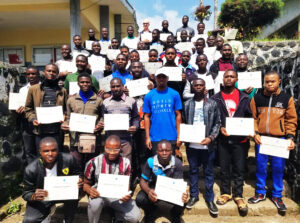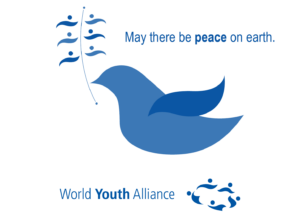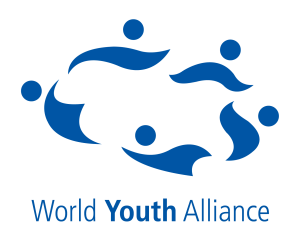 I am currently in the first half of my last year in college. The final half of this year will be spent on doing my thesis (I hope). I have already taken a pre-thesis course last semester, and in this previous course we were required to do a preliminary review of related literature (RRL) on our personally chosen topic. My chosen RRL topic (and therefore my potential thesis topic next semester) revolved around elderly people in the context of the aging population.
I am currently in the first half of my last year in college. The final half of this year will be spent on doing my thesis (I hope). I have already taken a pre-thesis course last semester, and in this previous course we were required to do a preliminary review of related literature (RRL) on our personally chosen topic. My chosen RRL topic (and therefore my potential thesis topic next semester) revolved around elderly people in the context of the aging population.
I have chosen this topic because aside from being inspired by my beloved grandmother, I am really curious about how society regards this sector of the population today. Today, we are experiencing a continuous global elderly population inflation that is most often seen in developed countries (like Japan), but is also gradually becoming a reality too in other developing countries like the Philippines (Cruz 2005 and Ogena 2007).
The globalization and aging of our societies comes with political, social and historical changes. But what is more worthy of attention are the changes in the way we regard the human person as we become entrenched into the said changes. This is because how we regard the person spells out how we manage our societies and how we direct our lives.
In this essay, however, I particularly focus on the way we regard the elderly person. I attempt to show the significance of reflecting on some of the experiences of the people belonging to this portion of the population, and how they create impacts in the lives of other age groups, especially young people like me.
To be able to do this I share some of the most essential points that I have written in my review of related literature. In this review of related literature, I argue that two general discourses have emerged in the current studies on aging population and the elderly.
The first discourse in my review of related literature looks at aging population’s pessimistic effects to the society. The most critical narrative in this discourse is the socioeconomic implications of having a growing elderly population. The main concern is the establishment of pension and health care systems, in light of the need to accommodate the needs of this age group. This obligation, however, is argued to be a great burden on a country’s working-age population. This is because the country’s younger labor force would be the one shouldering all the costs of establishing so.
Therefore, as elderly people continue to outnumber young people, especially in most developed countries like Japan, socioeconomic prosperity is at risk, (Heuvel et al. 1989 and Peterson 1999) since a large portion of the government funds would be devoted to meeting the growing needs of the growing elderly population. This is an even greater threat to developing countries, which do not have “the accompanying economic growth that characterized the experience of Western countries” in terms of accommodating an aging population (Peterson 1999 and Powell and Cook 2009).
On the other hand, the second general discourse shows some of the various factors that shape or alter the experience of the elderly, and focuses more on the relationship of the elderly population with other age groups.
One of the narratives in this section tackled the “disengagement’ of the older population from society and the elderly person’s increasing “dependence” on others (e.g. his/her family or relatives, nursing institutions, government). The socioeconomic narrative on aging actually gives way to the creation of “old age stereotypes” in the society commonly seen in television and magazine advertisements. These types of media typically reinforce the idea of the elderly as people who are “physically frail, weak, slow, boring or out-of-touch” (Bytheway 1995 and Thompson et al. 1997).
However, although physical incapacitation may be an inevitable part of aging, some studies would prove that this does not become a hindrance for elderly people to contribute meaningfully to their communities. A Filipino research study (Sorita 2004), even argues that the elderly population is actually a “resource” (Sorita 2004).
Meanwhile, a particular narrative from the second discourse of my review of related literature shows us that globalization and urbanization as socioeconomic phenomena affect the relationship between the elderly population and younger age groups. These social phenomena alter the society’s “environment and culture.” The “urban environment” and the “modern culture” that we have today tend to favor or cater to younger age groups and on the one hand “exclude” the elderly (Phillipson 2007).
But what is the significance of becoming aware of these narratives? It shows us that even age could be a pivotal stratifying factor in the society and that this alters or may confuse the way we see the human person, the way we respond to his or her needs and the way we apply the concept of dignity in society.
For instance, by thinking only about the socioeconomic consequences of the growing elderly population, we reduce the elderly as mere bodies to be taken cared of. By stereotyping the elderly population as “weak, boring, disengaged and dependent people,” we discourage them and subconsciously deprive them of living their freedom to grow in their later lives.
But these narratives are also probably just reminders that the young and old populations are inextricably linked, since we are all aging daily, and someday, the younger population will inevitably take the place of today’s elderly population. It is only during the semester I did this review of related literature that I had become more conscious of this idea. In fact, I think this sudden awareness is what actually led me to this topic. I just could not help but wonder about how it would feel like to be older. Like most people, I am quite anxious about the future, and about getting older.
But I have to accept that aging, after all, is a natural part of the life course. Perhaps, everything is up to how I live my life today as a young person. Moreover, perhaps, the best we can do is to age and live the rest of our lives meaningfully, and I believe that we must also help the elderly population of today age with dignity and live the rest of their lives meaningfully, too.
By: Justine Villegas, an intern at WYA Asia Pacific
Sources:
Bytheway, Bill. 1995. Ageism. USA: Open University Press.
Cruz, Grace T. 2005. Health Transitions Among Filipino Older People. Doctoral Dissertation,
College of Social Sciences and Philosophy, University of the Philippines, Quezon City.
Heuvel et al. 1989. “Introduction: ‘Opportunities and Challenges in an Ageing Society.’
In Opportunities and Challenges in an Ageing Society. Proceedings of the colloquium in Amsterdam, October 26-28, 1989.
Peterson, Peter. 1999. Gray Dawn: How the Coming Age Wave will Transform America- And the World. USA: Times Books
Phillipson,Chris. 2007. “The Elected and The Excluded: Sociological Perspectives on the Experience of Place and Community in Old Age” in Ageing & Society 27: 321–342. DOI:10.1017/S0144686X06005629
Powell, Jason and Ian G. Cook. 2009. “Global Ageing in Comparative Perspective: A Critical
Discussion.” The International Journal of Sociology and Social Policy 29(7/8): 388-400. Retrieved December 3, 2012 from http://search.proquest.com/pqcentral/docview/203710085/13AC9BBD8CF4F075552/7?accountid=141440
Sorita, Jasmin B. 2004. The Filipino Elderly as a Resource. Thesis, College of Social Sciences and Philosophy, University of the Philippines, Quezon City.
Thompson, P., C. Itzin. and M. Abendstern. 1990. I Don’t Feel Old: The Experience of Later Life. Oxford: Oxford University Press.
Villegas, Justine Kristel A. (2013). Greying Matters: Exploring the Themes and State of Ageing Studies in the Philippines.
A review of related literature submitted to Professor Filomin C. Gutierrez, Sociology 179, University of the Philippines, Diliman, Quezon City.







